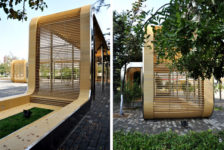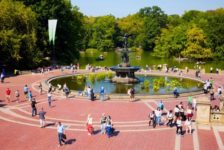One of the world’s most important historic gardens, known for its magnificent sculptures and mystical atmosphere, is the Park of Monsters in Bomarzo, situated in the center of Italy. Today, we could say that the park was one of the first examples of land art, in which the design of the soil and the creatures that inhabit it fully reflect the Mannerist character, building a veritable museum of sculptures with hidden meanings.
The History of Monsters Park
The garden was created at a time when alchemy, astrology, and magic were banned. However, at the same time, this heretic and hermetic world attracted the minds of intellectuals as enlightened as Prince Pier Francesco Orsini.
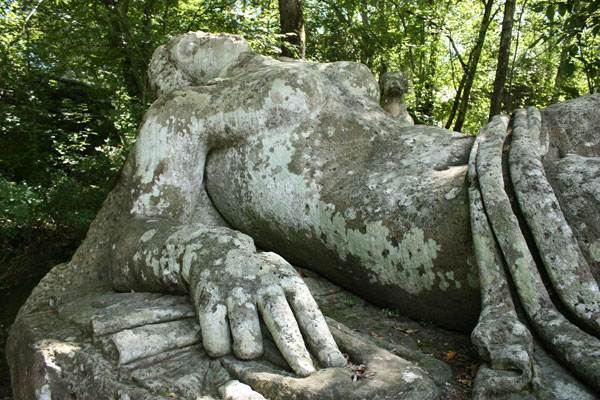
Photo by Maura Caturano
The duke of Bomarzo, called also Vicino Orsini, created the park in 1552 as the “Villa of Wonders” after the death of his wife, as a memorial garden to her. Much debate exists about who the architect was. Some thought he was the Vignola; others believe that Pirro Ligorio (c. 1520-1585) designed and laid out the park. The Park of Monsters would be dedicated to the great love between Vicino Orsini and his wife, Giulia Farnese. However, after the death of both, the park was forgotten for more than 400 years.
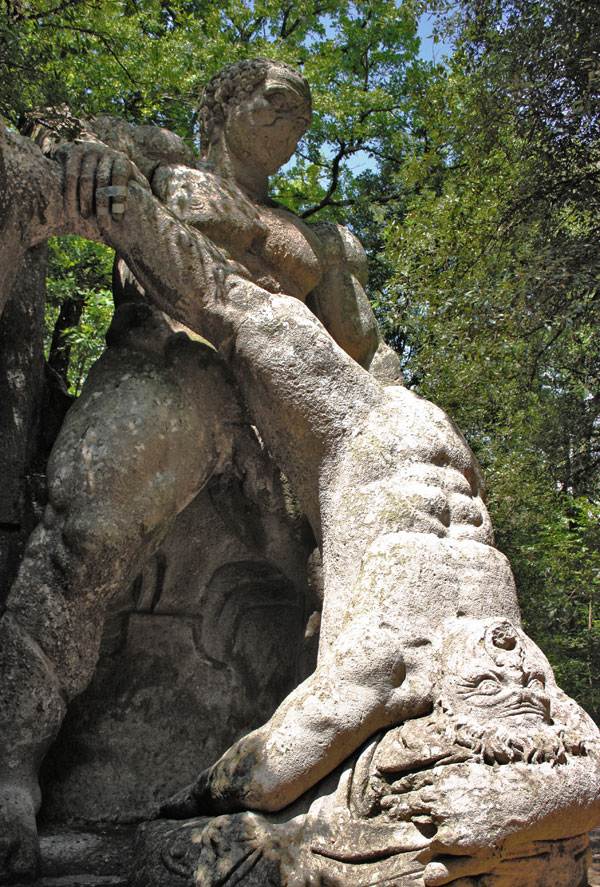
Photo by Maura Caturano.
The park is situated on the slopes of a tuffaceous cliff on which the old town of Bomarzo and the old castle sit. The Park of Monsters is home to two quite separate areas. It is possible that during Orsini’s lifetime, not all park areas were open to the public. One section may have been the real sacred grove entrance and the other the public one.
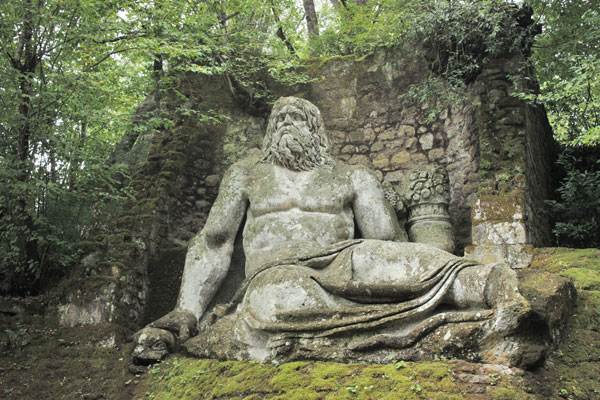
Photo by Maura Caturano.
Today, the garden has almost lost all of the original connections and passages between sculptures, but a secondary entrance, inaccessible today, marked the beginning of a journey of initiation.
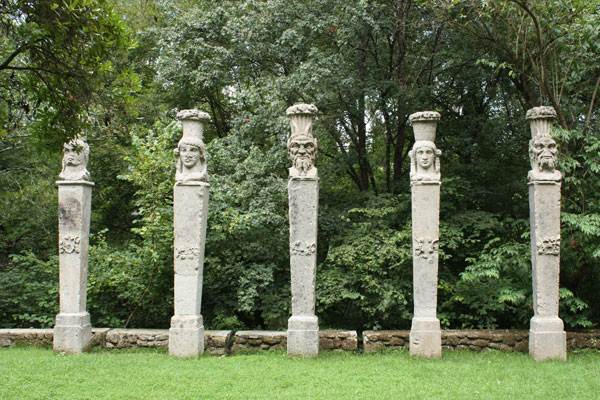
Photo by Maura Caturano.
The structure of the park rejects the symmetrical and axial layout. It was created as an invisible mystic triangle where sculptures were meant to dislocate with creativity and an alchemical approach to the whole area. Starting with a lateral entrance between two sphinxes, the visitor goes up a hill following the instruction of Latin sentences to arrive at the temple at the end of a magical and ascetic journey.

Photo by Maura Caturano.
The Sacred Grove Upon entering what Orsini called his Bosco Sacro (“Sacred Grove”), visitors are greeted with a message that translates as “You who enter this place, observe it piece by piece and tell me afterwards whether so many marvels were created for deception or purely for art.” Visitors are able to explore the entire area freely, and due to the location and morphology of the terrain, some monsters were almost certainly designed to fascinate and create alternative routes within the garden. Magic Creatures The garden is connected by a long series of hermetic thoughts sealed with phrases and expressions engraved on the sculptures that hide important literary and philosophical references.
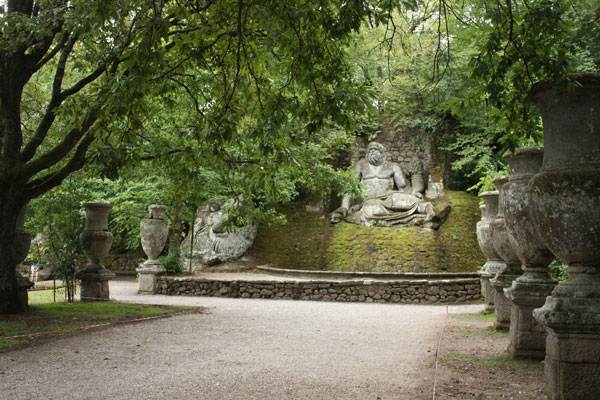
Photo by Maura Caturano.
Each sculpture has different meanings and different levels of reading, which is why this garden retains an air so mystical. Every creature is fascinating and magnificent individually, but together they lead the visitor to discover new meanings and analogies.

Photo by Maura Caturano.
There are more than 24 works of manieristic art in the garden, including the dragon fighting with lions and wolves, the elephant, the turtle, and the Pegasus, which had the power to end all strife and political crises. The Orcus, many other figures depicting the Roman and Greek gods, a whale, a monster tearing a man in half (alluding to the 1532 epic poem by Orlando Furioso), the Nymph, Venus, and a colossal mouth that gapes open to swallow visitors — the Hell Mask — are all examples of philosophical and humanist allegory.
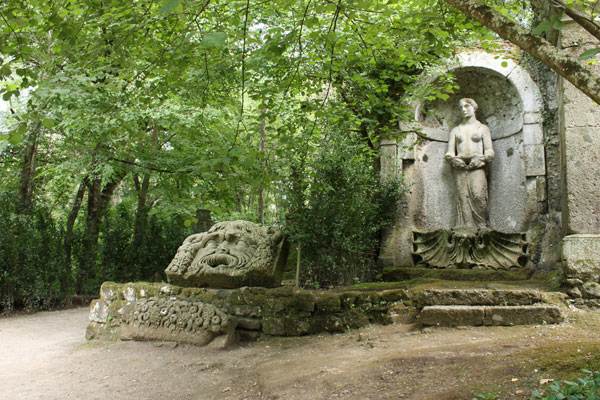
Photo by Maura Caturano.

Photo by Maura Caturano.
Some monuments were also built into the garden: an entry portal, a mausoleum, a gate, a theater, a house purposely built on an angle to throw visitors off balance, an Etruscan bench, and the temple of eternity — memorial to Giulia Farnese, located at the top of the garden.
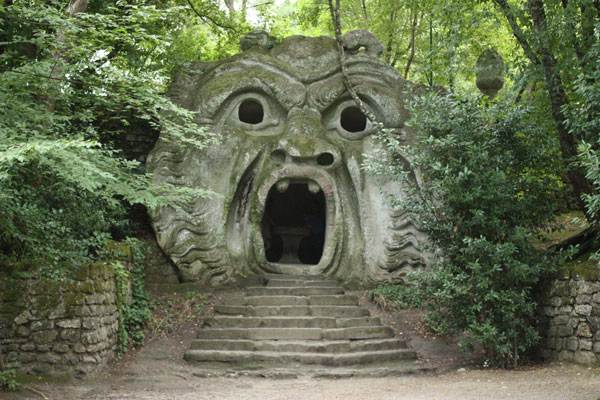
Photo by Maura Caturano.
This magnificent park had long been a place visited by intellectuals and artists. For example, Salvador Dalí visited the park and loved it so much that it inspired his 1946 painting “The Temptation of Saint Anthony”. Niki de Saint Phalle might also have been inspired by Bomarzo for her Tarot Garden, not so far away in Tuscany. The “Sacred Grove” represents a wonderful example of a garden created to fascinate and carry us into a fantasy world far from reality.
Recommended Reading:
Article by Maura Caturano. Return to Homepage
Published in Blog















